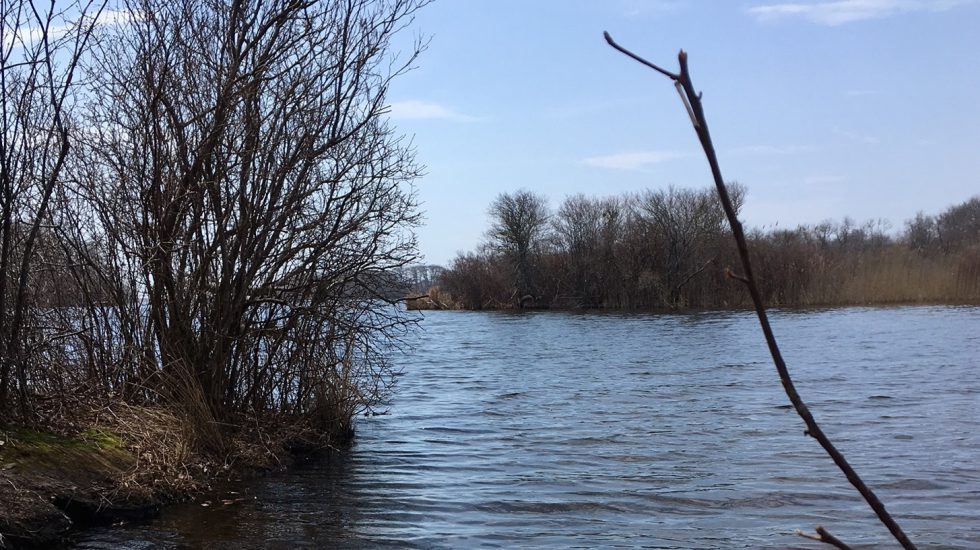Caring people restore a riverside
It was hard to visualize that the winding path beneath my feet was an overgrown, dumping ground not long ago.
But Joan, a lifelong and now elderly resident of Olneyville, said that she remembered bushwhacking through that brush and trash decades earlier alongside the first folks determined to one day create a trail that would reconnect the Woonasquatucket River with neighborhood residents.
Those “visionaries,” as Joan called them, used machetes to cut through the overgrown vegetation.
Joan’s tale prompted Elizabeth, a relatively new Olneyville occupant, to share that this stroll — the third annual Paul McElroy Bird Walk — was her first along the river.
Compared with Joan, everything was new to Elizabeth, a certified nursing assistant who moved to Providence from the Dominican Republic two years ago.
For example, when Elizabeth saw a female mallard on the Woonasquatucket, she said that the bird reminded her of a yaguasa, a type of duck that inhabits the Isabela River in her hometown of Santo Domingo.
And when we sniffed the creamy fragrance of black locust flowers, Elizabeth said that the smell reminded her of vetiver, an alluring scent derived from a plant related to lemongrass.
The walk along the Woonasquatucket River Greenway bike path honored the late Paul McElroy, a supporter of the Woonasquatucket River Watershed Council (WRWC) and the Audubon Society of Rhode Island.
Decades of dreaming, planning and labor led to completion of the first on-road segment of the path in 2002, with the work ongoing in several forms.
For example, we visited a fish ladder, finished in 2009, in Riverside Park. The ladder allows “fish such as shad and herring, which migrate from salt water to fresh water to spawn, and eels, which migrate from fresh to salt to spawn, to move up and down the lower river,” notes the WRWC.
Just two days before the walk, 26 herring used the ladder to continue their trek to upstream breeding grounds.
We also found meadows where there was once environmental contamination, and woodlots, formerly home to rubble.
As a result, we uttered an “ooh — ah” at a large mat of native phlox, a wildflower with blue blossoms, in the floodplain, and again at the vivid orange plumage of a male Baltimore oriole, foraging for insects in the treetops.
We heard a tree frog calling near a small wetland and watched a belted kingfisher hurry past, its rattling call louder than traffic on nearby Route 6.
That we could experience these wonders, while making new friends, was the result of the courage and dedication of those who came before us, plus the hard work of the folks who continue to revitalize this waterway and its surroundings for all of us to discover and enjoy.
